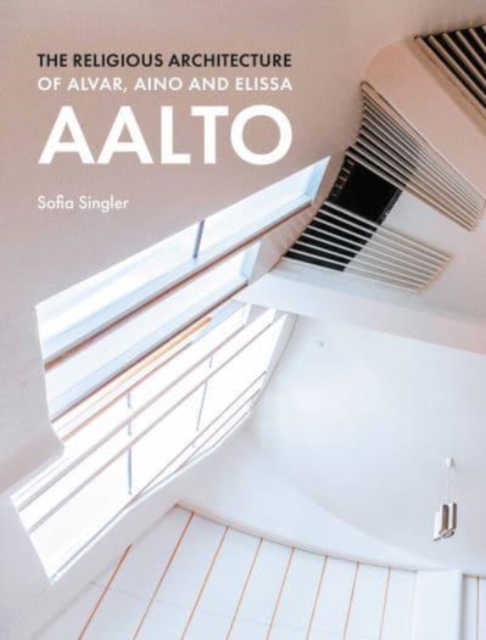The Religious Architecture of Alvar, Aino and Elissa Aalto

The Religious Architecture of Alvar, Aino and Elissa Aalto
This book offers the first critical account of Studio Aalto's religious modern architecture. Aalto's ecclesiastical oeuvre is viewed as an evocative subgenre of the practice's portfolio, but its relationship to religion has eluded enquiry. Where previously discussed, the longstanding collaboration between Aalto and the Church has been put down to reciprocal expediency, and the buildings perceived as spatially and structurally stirring experiments, yet devoid of religious meanings or implications. The idiosyncratic plasticity of the Church of the Three Crosses (1955-58) in Imatra, Finland--the most famous and architecturally impressive of Aalto's churches--is cited as ultimate evidence of Aalto's exploitation of the religious brief for the creation of a 'sculptural irrationality'.
This book challenges the assumed autonomy of Studio Aalto's ecclesiastical oeuvre from religion. Analysing designs for churches, parish centres, funerary chapels and cemeteries in Finland, Denmark, Germany and Italy, the book shows that Aalto's engagement with religion transcended artistic opportunism. The book addresses Aalto's sacred oeuvre in its entirety, yet pays particular attention to the Church of the Three Crosses, broadly considered the apotheosis of Aalto's sacred career. Through a detailed analysis of the religious actors and factors that shaped the design and construction of Aalto's sacred works--from local parish building committees to bishops, and from liturgical reform movements to post-war debates on sacred art--this book shows that religious influences were neither extrinsic nor peripheral to Aalto's modernism, but intrinsic and intimately related to it. The study of previously uncovered primary archival materials establishes that Aalto's engagement with the Church was a consciously and productively symbiotic partnership which drew from shared interests and values, yet which also encompassed compromise and conflict. The resultant buildings neither glorify nor deny institutional religion -- instead, this book argues, they challenge rigid dogmatism in religion as much as in modern architecture.
PRP: 619.94 Lei
Acesta este Prețul Recomandat de Producător. Prețul de vânzare al produsului este afișat mai jos.
495.95Lei
495.95Lei
619.94 LeiLivrare in 2-4 saptamani
Descrierea produsului
This book offers the first critical account of Studio Aalto's religious modern architecture. Aalto's ecclesiastical oeuvre is viewed as an evocative subgenre of the practice's portfolio, but its relationship to religion has eluded enquiry. Where previously discussed, the longstanding collaboration between Aalto and the Church has been put down to reciprocal expediency, and the buildings perceived as spatially and structurally stirring experiments, yet devoid of religious meanings or implications. The idiosyncratic plasticity of the Church of the Three Crosses (1955-58) in Imatra, Finland--the most famous and architecturally impressive of Aalto's churches--is cited as ultimate evidence of Aalto's exploitation of the religious brief for the creation of a 'sculptural irrationality'.
This book challenges the assumed autonomy of Studio Aalto's ecclesiastical oeuvre from religion. Analysing designs for churches, parish centres, funerary chapels and cemeteries in Finland, Denmark, Germany and Italy, the book shows that Aalto's engagement with religion transcended artistic opportunism. The book addresses Aalto's sacred oeuvre in its entirety, yet pays particular attention to the Church of the Three Crosses, broadly considered the apotheosis of Aalto's sacred career. Through a detailed analysis of the religious actors and factors that shaped the design and construction of Aalto's sacred works--from local parish building committees to bishops, and from liturgical reform movements to post-war debates on sacred art--this book shows that religious influences were neither extrinsic nor peripheral to Aalto's modernism, but intrinsic and intimately related to it. The study of previously uncovered primary archival materials establishes that Aalto's engagement with the Church was a consciously and productively symbiotic partnership which drew from shared interests and values, yet which also encompassed compromise and conflict. The resultant buildings neither glorify nor deny institutional religion -- instead, this book argues, they challenge rigid dogmatism in religion as much as in modern architecture.
Detaliile produsului









